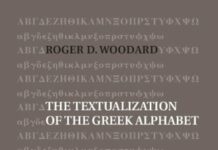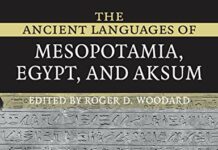
Ebook Info
- Published: 2008
- Number of pages: 210 pages
- Format: PDF
- File Size: 1.15 MB
- Authors: Roger D. Woodard
Description
This book, derived from the acclaimed Cambridge Encyclopedia of the World’s Ancient Languages, describes the ancient languages of Asia Minor, for the convenience of students and specialists working in that area. Each chapter of the work focuses on an individual language or, in some instances, a set of closely related varieties of a language. Providing a full descriptive presentation, each of these chapters examines the writing system(s), phonology, morphology, syntax and lexicon of that language, and places the language within its proper linguistic and historical context. The volume brings together an international array of scholars, each a leading specialist in ancient language study. While designed primarily for scholars and students of linguistics, this work will prove invaluable to all whose studies take them into the realm of ancient language.
User’s Reviews
Reviews from Amazon users which were colected at the time this book was published on the website:
⭐A very informative study for those who are interested in Ancient Languages and Culture.
⭐This is volume two of the Cambridge Encyclopedia of the World’s Ancient Languages, a collection of 45 entries covering in principle all languages of which sufficient recorded material is available from before 476 AD to write a meaningful entry about. All entries are of superb quality.The main body concerns the Anatolian languages. In addition to Hittite, there are very interesting chapters on the less known Anatolian Languages: Luvian, Palaic, Lycian (in two dialects, Lycian A and Milyan), Lydian, Carian, and Phrygian. Script, grammar, and examples of each of these languages are discussed extensively, and many remarkable facts are presented. For example, the Carian script looks like Greek-derived, but it turns out many of the symbols have completely different values than in Greek, which made decipherment even more a puzzle than usual.Next come two non-Indo-European languages: Hurrian, and Urartian. Again a surprising find here: the numbers 6 and 7 are `shezhe’ and `shindi’ in Hurrian, repeating a pattern found in Indo-European (Eng. `six’, `seven’), Semitic (Hebrew `shesh’, `sheva’), and Etruscan (`sha’, `semph’).The next language is Classical Armenian. The chapter shows that the weirdness of Modern Armenian is not the product of the last millennium and a half; Classical Armenian was already that way. But a large part of the weirdness is explained.The last chapter is about Early Georgian; not exactly Asia Minor, but it’s interesting, so who cares, especially since the book gives a very convincing account of the origin of the Georgian skreeves system, although the authors do not use the term.The volume closes with an appendix with a list of cuneiform signs; unfortunately the Borger numbers of the signs are not given.These five books are going to get prime estate in my book case!
⭐interesting
⭐It was a difficult, yet very informative volume! The overview is very useful for all students and amateur scholars of the Ancient Anatolian and/or Ancient Near Eastern Languages.
Keywords
Free Download The Ancient Languages of Asia Minor in PDF format
The Ancient Languages of Asia Minor PDF Free Download
Download The Ancient Languages of Asia Minor 2008 PDF Free
The Ancient Languages of Asia Minor 2008 PDF Free Download
Download The Ancient Languages of Asia Minor PDF
Free Download Ebook The Ancient Languages of Asia Minor





